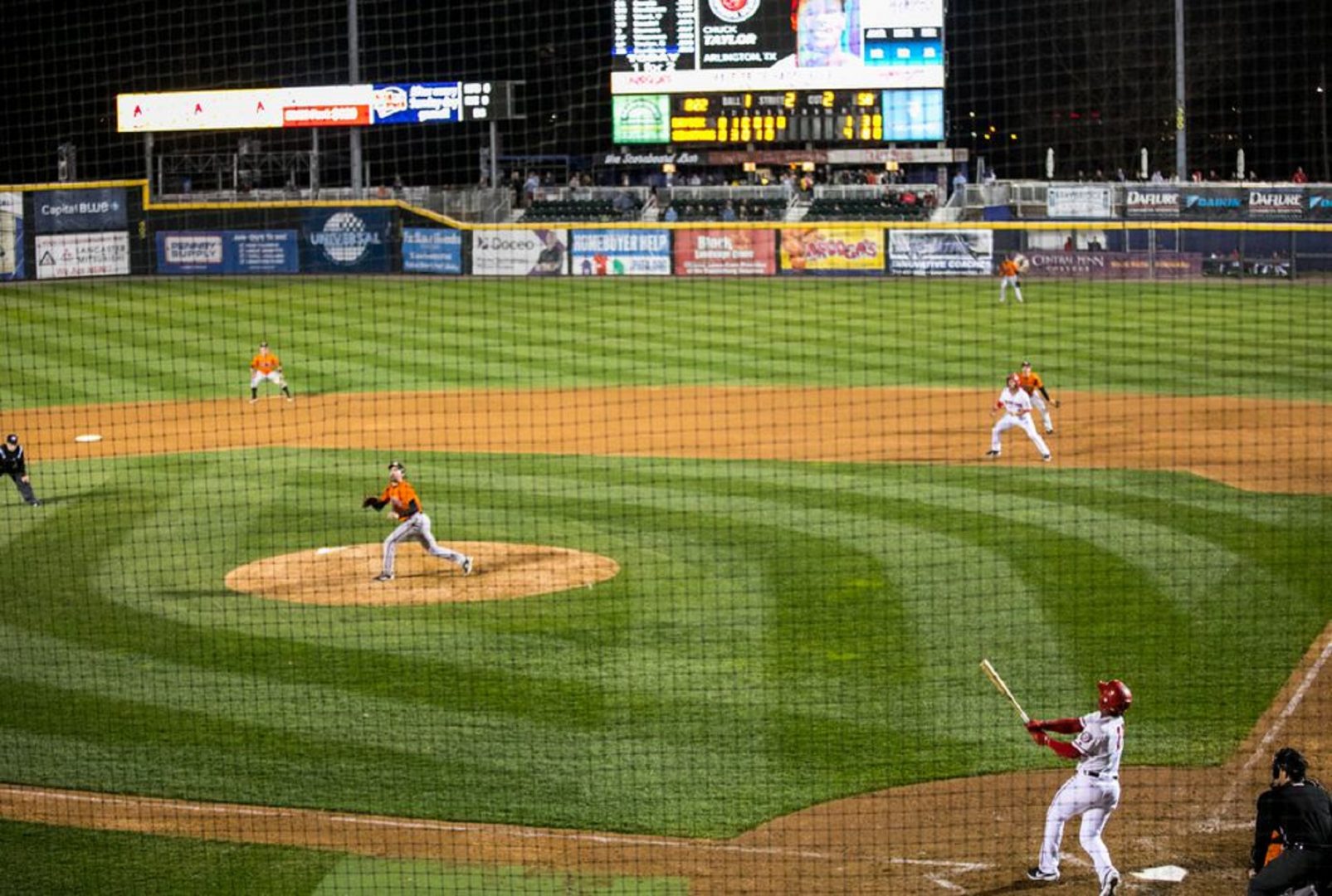
Harrisburg's Chuck Taylor hits a grand slam against Bowie during opening day at FNB Field on City Island. April 04, 2019.
Sean Simmers / PennLive

Harrisburg's Chuck Taylor hits a grand slam against Bowie during opening day at FNB Field on City Island. April 04, 2019.
Sean Simmers / PennLive

Sean Simmers / PennLive
Harrisburg's Chuck Taylor hits a grand slam against Bowie during opening day at FNB Field on City Island. April 04, 2019.
(Harrisburg) — Jeremy Wolf was with the Kingsport (Tenn.) Mets in 2016 when he broke the last bat he entered the minors with. He went to the team, the rookie league affiliate of the New York Mets, to ask for more, and he was told he would need to buy them himself with his own money.
That was Wolf’s introduction to the realities of minor league baseball after the Mets made him a 31st-round pick out of Trinity University in Texas in that summer’s draft. The more time he spent in the minors, the more the stark conditions became apparent to him.
Sometimes, he said, he and his teammates wouldn’t receive their allotted two meals per day.
“I would play hungry, and I would go to bed hungry,” Wolf said in a phone interview. “I played in front of 10,000 people a night, and I wouldn’t have food to eat after a game, and I wouldn’t have enough money to go get food.”
When Major League Baseball’s best take the field for the All-Star Game in Cleveland, some of the game’s highest-paid stars will be on display in the showcase for an industry that rakes in billions. But nearly all of those players arrived in the majors after spending at least some time in the minors, where players struggle with low salaries.
The average salary for a minor league baseball player, whose contract is handled by Major League Baseball, ranged from around $6,000 in Single-A to around $9,350 in Double-A to nearly $15,000 in Triple-A in 2018, according to The Athletic. Those wages cover only the months of the regular season. Players are not paid during spring training or in fall leagues.
The poverty line in 2019 is $12,490, according to the U.S. Department of Health and Human Services.
Meanwhile, the average major league team is worth $1.78 billion, according to Forbes, and MLB set a record with $10.3 billion in revenue last season, according to Forbes,
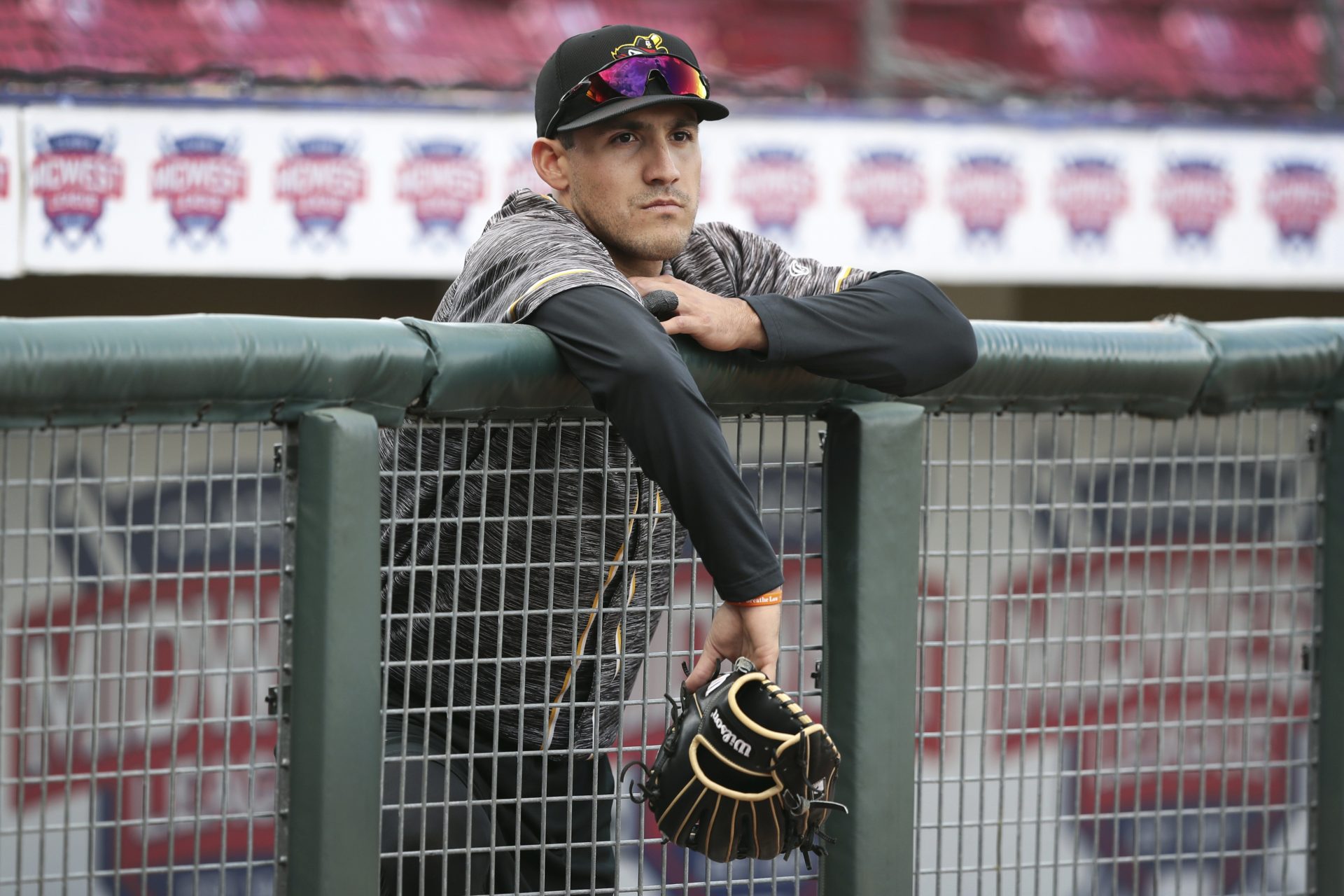
Charlie Neibergall / The Associated Press
In this Monday, May 13, 2019 photo, Quad Cities River Bandits outfielder Alex McKenna stands in the dugout before a Class-A Midwest League baseball game against the Cedar Rapids Kernels in Cedar Rapids, Iowa.
There have been recent attempts to use that wealth to improve conditions for minor league baseball players. The Blue Jays moved to increase minor league pay by 40% to 56% earlier this year, but other teams have yet to follow their lead.
For fans who flock to FNB Field to watch the Harrisburg Senators, the Double-A affiliate of the Nationals, or those who head to FirstEnergy Stadium to see the Reading Fightin Phils, the Double-A affiliate of the Phillies, that reality might not be too apparent.
After all, there are plenty of eye-popping numbers around Major League Baseball right now. Bryce Harper signed with the Phillies for $330 million over the next 13 years in late February. A couple weeks later, Mike Trout and the Angels one-upped him — and then some — with a deal worth more than $426 million over 12 years.
But that’s for the select few who ascend to the pinnacle of their sport. On the 256 teams that make up Minor League Baseball, there are plenty of players, even those who go on to make an impact in the majors, struggling to make ends meet.
The Nationals declined comment for this story, while the Phillies and Pirates did not respond to requests for comment.
Cardinals pitcher Adam Wainwright’s first check in baseball was for $304. Dodgers second baseman Kiké Hernándezsecond-guessed his life choice after his first check was for $327 in the Astros organization.
Given his draft position, Wolf wasn’t necessarily a high priority player the Mets had pegged for stardom. The organization gave him a $5,000 signing bonus, which Wolf called “$5,000 worth of opportunity.” Players whose signing bonuses were in the millions had that much more opportunity, Wolf said.
But no matter what the financial background of a player is, the money still goes toward buying equipment, paying for housing, eating meals, contributing to clubhouse dues and more expenses.
So after his playing career ended because of a back injury two years ago, Wolf, now 25, decided to do something about the conditions that minor league baseball players face. He founded the nonprofit More Than Baseball, which wants to improve the living and working situations for baseball players across the country.
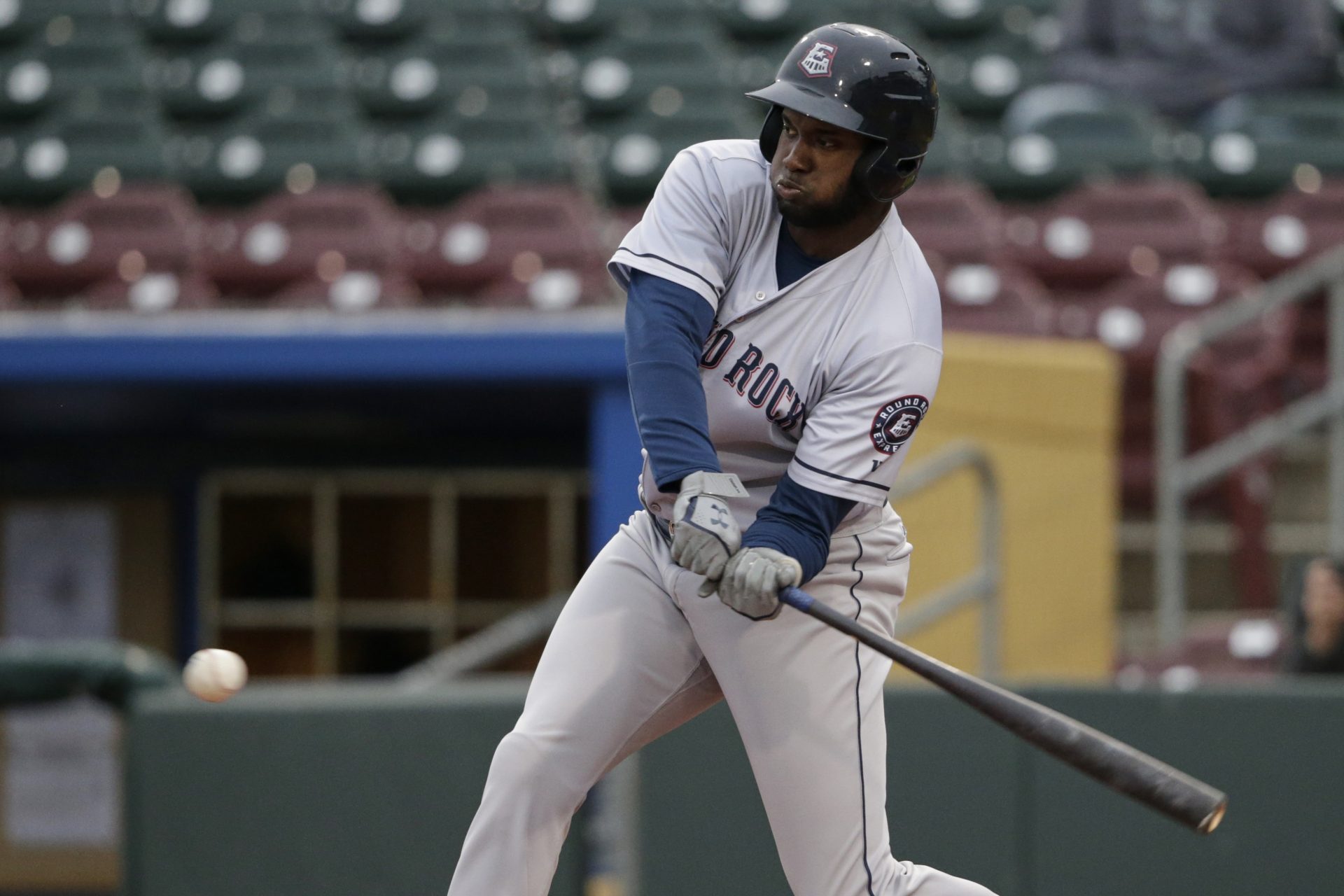
Nati Harnik / The Associated Press
In this May 7, 2019 photo, Round Rock designated hitter Yordan Alvarez swings. Nati Harnik
“What I thought about what I thought professional baseball was is nowhere close to what it actually is,” said former Yankees first-round pick Slade Heathcott, who is More Than Baseball’s director of baseball development.
Heathcott received a $2.2 million signing bonus, a number that he acknowledged helps fuel perceptions about minor league baseball players. But he said he didn’t make a five-figure salary as a minor league player until after five years of toiling on long bus rides with only $25 of meal money per day when the only food options might be Wendy’s or McDonald’s.
He eventually appeared in 17 games for the Yankees in 2015 and hit two home runs. Heathcott retired earlier this year after spending the beginning of the 2018 season in the Athletics organization, ending a once-promising career that featured multiple knee and shoulder surgeries.
“I fortunately did not have to deal with a lot of things that players have to deal with where I was drafted, but I saw guys struggling to buy bats or buy gloves or not have the ability to put food on the table in order to keep playing the game of baseball, and it’s just something that I saw many, many times,” Heathcott said earlier this month. “It’s something I felt very passionate about.”
In Pennsylvania, there are upwards of 200 players on the rosters of eight minor league teams at three different levels. The majority of those players will never have the opportunity to play for the Phillies or the Pirates or any of the 28 other teams in Major League Baseball.
Some of those players are seen as future stars, such as Harrisburg infielder Luis Garcia, who was ranked as the No. 3 prospect in the Nationals organization by MLB.com and signed with the organization for $1.3 million out of the Dominican Republic. But plenty of players signed for only a couple thousand dollars out of college, like Wolf did three years ago.
Pirates right-hander Geoff Hartlieb’s signing bonus as a 29th-round pick in 2016 was $1,167 after taxes, according to the Pittsburgh Post-Gazette. When righty Chad Kuhl was promoted to Pittsburgh’s 40-man roster and began earning the major league minimum, which was then $507,000, he told the Post-Gazette that he earned more in 10 days than he did the previous year at Double-A Altoona.
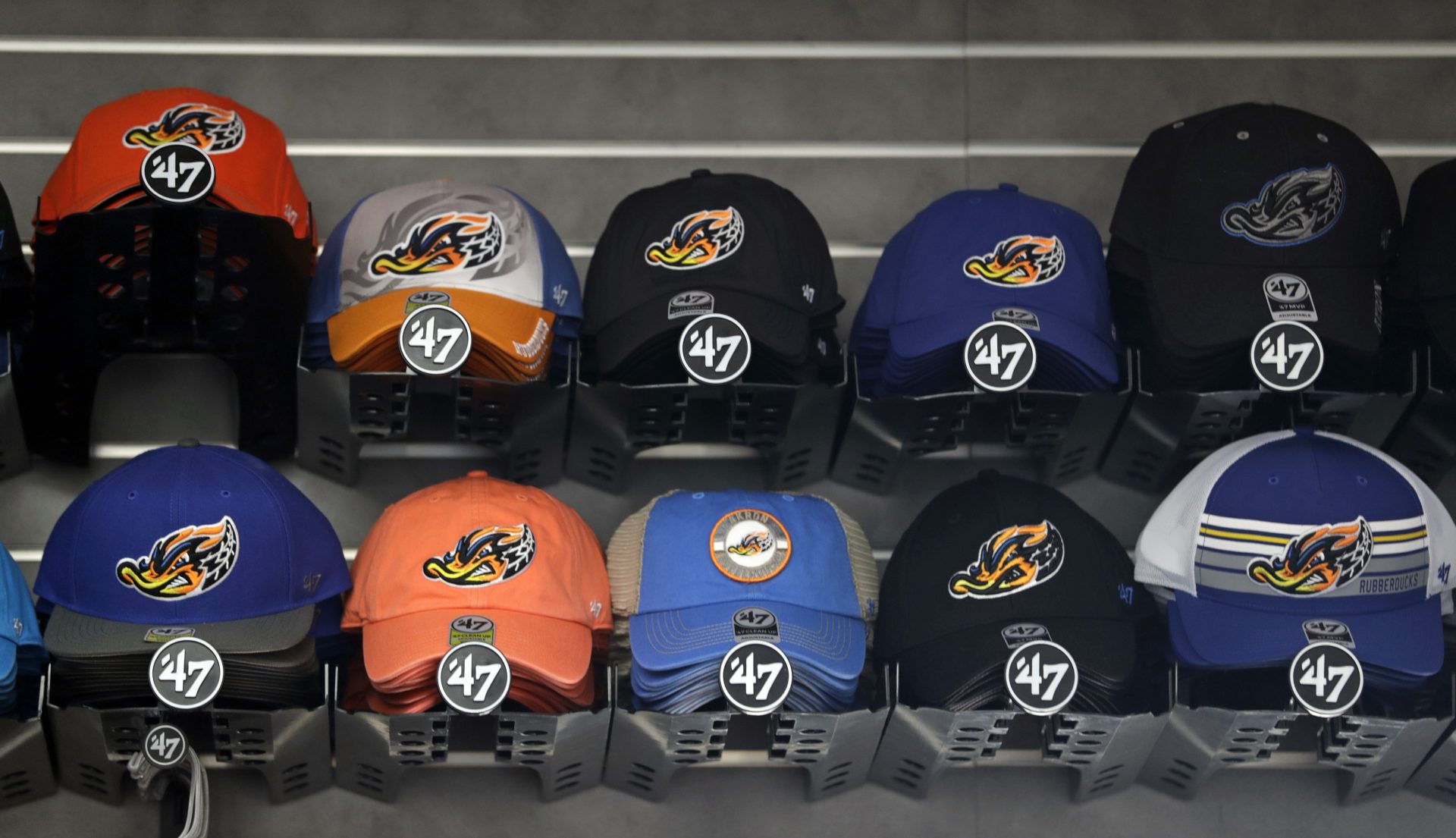
Tony Dejak / The Associated Press
Caps carrying Akron Rubber Ducks branding rest on a shelf at the team shop before a minor-league baseball game between Akron and Bowie, Thursday, April 18, 2019, in Akron, Ohio.
“There is not a real easy answer or simple answer, but you hope somewhere down the road; it is a grind to play minor league baseball with everyone having the shared dream of playing in the major league,” Hall of Fame pitcher John Smoltz told PennLive. “One percent make it, which is a really low number. It’s a hard life. It’s one that you chase for quite some time and you’re always believing you can get that next year or get that chance.”
The move by the Blue Jays to increase the pay of their minor leaguers is seen as a step in the right direction by some observers, including Wolf. But while a 56 percent increase in pay for a player in Single-A seems gaudy, The Athletic estimates that those players will still earn less than $12,000 per season. The first-year Triple-A players who receive 40 percent raises will make $15,250 over the course of a five-month season.
Wolf called the 50 percent increase “life-changing” for certain players, and it signals to players that the organization cares about them. And that’s something that can lead to a better product on the field.
“We are making progress,” Wolf said. “Change is taking place because we are talking about minor league baseball. It doesn’t change your day-to-day. This kid still needs help trying to find a job. This kid’s still going to be on his own. He’s going to need help finding equipment. He’s going to need help with protection, so it’s tremendously huge. I love the Blue Jays are taking this.”
Some have looked to the courts for help. Former minor league pitcher Garrett Broshuis filed a class-action lawsuit against MLB over minor league pay, which is currently awaiting an appeal from the 9th U.S. Circuit Court of Appeals on its class certification, according to ESPN.
But there are still a number of things that stand in the way of the goal for Wolf and others. The “Save America’s Pastime Act” was included in last year’s spending bill, and it modified the Fair Labor Standards Act of 1938 to strip minor leaguers of minimum wage protection. Both Major League Baseball, which has had an antitrust exemption since 1922, and Minor League Baseball, whose players don’t have union protection, lobbied for it.
There can also be some pushback from fellow players. Nationals outfielder Adam Eaton drew the ire of parts of the baseball world last month when he told Washington City Paper that he didn’t think minor league conditions needed to be improved because “complacency sets in.” He later posted an apology on his Instagram account.
“It’s not ok to exploit anyone in any profession,” Eaton wrote. “The minor leaguers deserve better. They deserve more money. They deserve better conditions. Period. My quotes are simply from my personal experience. I wouldn’t trade my minor league experience for anything. As difficult as it was, it has made me the ball player/person I am today. I’m sorry if I offended anyone in anyway. Wasn’t my intentions.”
Baseball is at a unique time financially. MLB set another record in revenue, and all 30 MLB teams are worth at least $1 billion. The Phillies are worth $1.85 billion, the Pirates check in at $1.275 billion and the Nationals are valued at $1.75 billion, according to Forbes. But the average player salary declined for the first time since 2004.
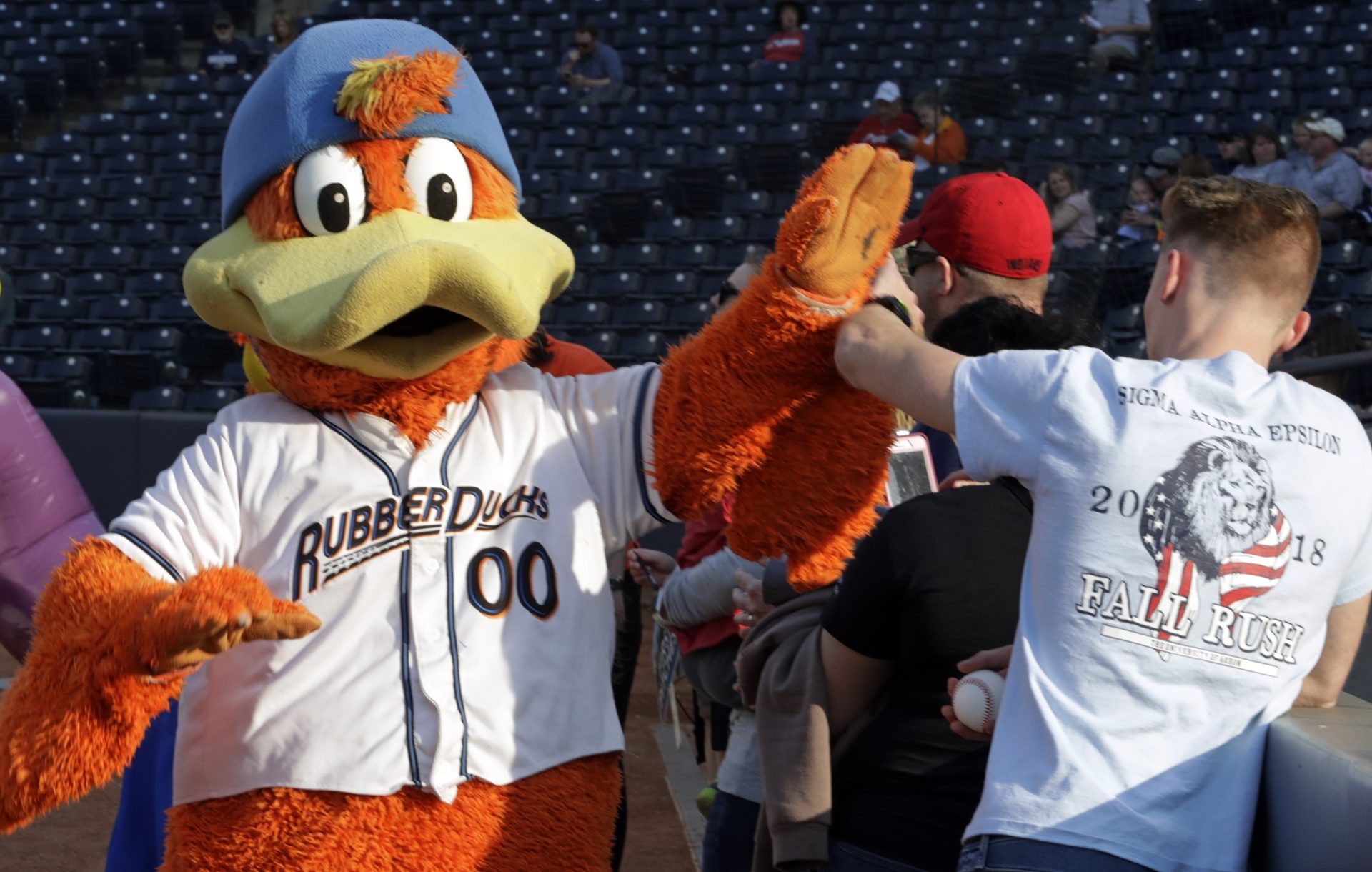
Tony Dejak / The Associated Press
Akron Rubber Ducks mascot, Webster, gives a high five to a fan before a minor-league baseball game between Akron and Bowie, Thursday, April 18, 2019, in Akron, Ohio.
Even Harper’s eye-popping contract raised some red flags because of how long into the offseason he went unsigned, and other established major leaguers like pitchers Craig Kimbrel and Dallas Keuchel remained unsigned into June.
“We look at it from a logical perspective, from a financial perspective, but we look at it from a moral perspective,” Wolf said. “What’s the right thing to do? Some people would say, well, if you don’t like it, then go do something else. But we don’t see it that way. Why are they defending billionaire owners and not average professional baseball players who are good enough to make it but can’t afford to make it?”
More Than Baseball has embarked on a significant task to effect change in baseball. In May, Wolf launched a GoFundMe with the goal of raising $25,000 toward More Than Baseball’s programs, which include providing housing, food, equipment and access to career development and education opportunities to minor league players.
While Wolf’s efforts are focused on players who might be on the fringes of the game, he thinks the efforts — starting with improved pay and conditions — should have an overall positive impact on baseball. And in the end, that’s what he wants to achieve.
“These organizations want to help their investments prosper,” Wolf said. “These players are commodities, and if you allow these commodities to mature the way that they should, you have more opportunity to create wins, you have more opportunity to create major leaguers for trade value or actually playing for your team.
“If you’re taking a kid who got $50,000 on a signing bonus and he has to go find his own job in the offseason and he can’t focus 12 months a year on baseball, then you’re wasting that investment. You’re wasting that opportunity. … We want these guys to be protected. But on the other hand, these teams see value because they can help their investments prosper.”
PennLive and The Patriot-News are partners with PA Post.
The days of journalism’s one-way street of simply producing stories for the public have long been over. Now, it’s time to find better ways to interact with you and ensure we meet your high standards of what a credible media organization should be.